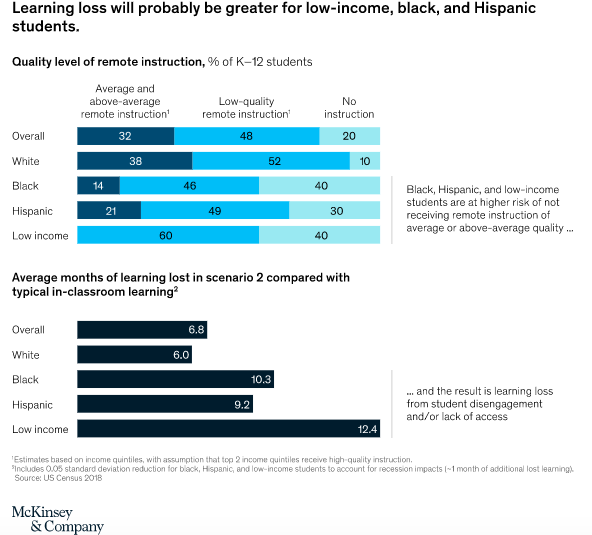The Current State of Distance Education is Failing Our Children

This is an independent opinion. Want to respond? Write your own commentary! Email hoa@ivn.us.
The issue of whether to physically open schools or not for the fall period has drawn a great deal of concern, anger and frustration on all sides of the issue.
It is my opinion that all of the discussions and posturing have been significantly misplaced. Virtually all of the media coverage, politicians, and educators have been focused on one issue: the health risks of bringing children back into school buildings for them, their teachers and their families.
Clearly this is a very important and pertinent issue, but if it is the controlling issue the logical conclusion is that the risks are too high and children should be subjected to “distance learning.”
Sadly, this totally disenfranchises at least one-third, and perhaps as many as one half, of all students in K-12, and assures that they will not receive any education going forward.
What we know is that this cohort of children are typically from the lowest economic strata. They are more often than not children of color. Their parents or guardians are themselves under-educated. If they can work during the pandemic they hold the lower paying jobs, and without those jobs they risk becoming homeless.
To these people high-speed wifi and state-of-the-art computers for each child is a luxury they cannot afford, and private learning spaces in their dwellings are non-existent.
As I watch this debate play out on television and in the daily press, what I see and read is all about white middle- and upper-class parents, teachers, politicians whose children have all the tools they need to study and learn online at home. We are now even hearing that these parents and educators are forming “pods” of children funded by the parents to study and learn in “safe, distanced” environments. This addresses another controlling issue which is that when parents must go back to work they have no safety net for their children who must stay home.
The world-renowned consulting firm McKinsey & Company recently published a report on this issue with the following chart, which should frighten us all.

The “low-quality remote instruction” noted in the chart is primarily due to a lack of necessary skills on the part of those providing remote learning. To be fair, educators have not been properly trained to do this using the best aspects of the medium, so the overall quality is low. This can and should be corrected through required skills enhancement for educators.]
The issue of opening or not opening school buildings is NOT one-size-fits-all. If we make it so, then we are relegating at least one-third of our children to a future of despair. They are already at significant financial and social risk when they become adults, and this will only ensure their future is one of no upward mobility, one of frustration and disenfranchisement. These children have already lost ground due to the school shutdowns from March through June and any further loss will be devastating.
We must not allow this to happen!
Yes, there are health risks to bringing children together, however those can and should be managed because they are manageable; but the loss children will suffer in their educational and social attainment will be irreparable.
The answer is to have a bifurcated system. On the one hand children whose home environment allows for distance learning in a safe and supportive environment should be encouraged to do just that, stay home and study online.
On the other hand, children without access to a safe, secure and monitored in-home setting must be brought to “learning centers” — school buildings, libraries, civic centers — where they have access to wifi, computers and the adult oversight to learn. If half or more of the students are learning at home then social distancing at the “learning centers” will be possible and manageable. Yes, there will be risks, but we must weigh those against the risk of creating a cohort of children who grow up lost because they failed to get the education necessary to succeed.
We take risks all the time. We currently have Peace Corps personnel in such high-risk places as Myanmar, Uganda, Ukraine, Jordan, Cambodia and many more. Surely we can take the risk here in the United States to educate our children.
The time to act is now and we have an obligation and a commitment to all our children. As Kofi Annan, the former Secretary General of the United Nations, put it: “There is no trust more sacred than the one the world holds with children. There is no duty more important than ensuring that their rights are respected, that their welfare is protected.”
This story was republished with permission from TimesofSanDiego.com.




